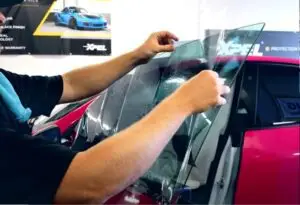Ceramic Window Film Care How To
Window tint offers many benefits, including enhanced vehicle comfort and protection from harmful UV rays. But like any other car component, it requires regular maintenance to keep it in good condition.
When cleaning your ceramic tinted windows, listen to what the pros say at Alta Mere in Plano, Texas. Be sure to use an ammonia-free cleaner formulated specifically for automotive glass. Then, use a clean microfiber cloth to wipe the surface.
1. Clean It Regularly
Ceramic window tint is durable, looks great, and helps you save money on gas over the lifetime of your car. However, if you don’t keep it clean, your car can quickly start to look less appealing. Luckily, there are many products and techniques to help you keep your car looking  shiny and new.
shiny and new.
Using non-abrasive cleaners and cleaning tools is important for maintaining your window film’s integrity. Avoid scouring pads or coarse sponges, and use microfiber cloths or lint-free towels. These items will prevent any scratches or marks from damaging the tint, and can also eliminate streaks in your windows.
Also, opt for a non-ammonia cleaner specifically made for window tint. Ammonia can leave a streaky residue on the film, and may damage certain types of windows.
Another important tip for keeping your tint clean is to work in small sections at a time. This ensures that you can fully inspect your window for any missed spots or smudges. It’s also helpful to wipe in opposite directions on the final pass to get a streak-free finish. For example, wiping horizontally on the outside of the window and vertically on the inside. This will give the appearance of a fuller wipe and a streak-free finish. In addition, this will also help to detect any areas where moisture or cleaner may be hiding.
2. Repair Any Damage
XPEL’s PRIME XR PLUS ceramic window tint offers high heat rejection to keep your vehicle cooler, glare reduction and protection from harmful UV rays. This film can also help hold shattered glass together in the event of an accident, decreasing risks of injury to passengers and deterring theft from your vehicle.
The brand’s patented nano-ceramic technology is what makes this product stand out, as it is much more durable than traditional dyed or metalized films. This translates to better clarity, color stability and longevity. Additionally, a non-reflective appearance helps maintain the appearance of your vehicle’s windows, even after years of use.
Solar Gard is a San Diego-based company under the multinational Saint-Gobain umbrella, giving it access to world-class laboratories and data scientists. Its established VortexIR ceramic series features a non-reflective, deep black look that absorbs radiant energy instead of reflecting it. This series rejects 96% of infrared rays and provides 99% UV protection with a TSER (Tint Sunscreen Energy Rating) of up to 65%.
Johnson Window Film’s InsulatIR uses a patented nano-ceramic oxide particle formula that delivers superior heat rejection and glare control. This ceramic film is available in seven gradients, from an almost-clear VLT of 82% to limo-grade blackout at 6%. It is scratch-resistant, resists ghosting and hazing, and does not interfere with GPS or cell signal reception.
3. Re-Tint When Needed
Ceramic window tint is a high-performance alternative to regular dyed window tint. It protects you and your passengers from harmful UV rays and reduces heat inside the vehicle. It also helps with glare, making it easier to drive and see out of your windows. While it does not block all light emissions, it significantly reduces them.
If your new tint starts to bubble or peel, it can be re-tinted for a fresh start. It is important to contact a professional installer. Removing old tint is not for the DIYer, and even if you do it yourself, it can be a messy and risky process. Spray the area with distilled water to loosen the old film, then remove it carefully and clean any residues from the glass. Cut a new piece of tinting film one inch larger on all sides than the marked area.
It is normal for your window to appear hazy or cloudy for the first few days after tinting. This is caused by excess water between the glass and the tint that can’t be fully squeegeed off. Avoid using cleaners that contain ammonia, as they can damage the tinted surface. Instead, use a cleaner such as Americana Global Ceramic Glass Cleaner. Always use the dry side of the towel for the best results.


One Response